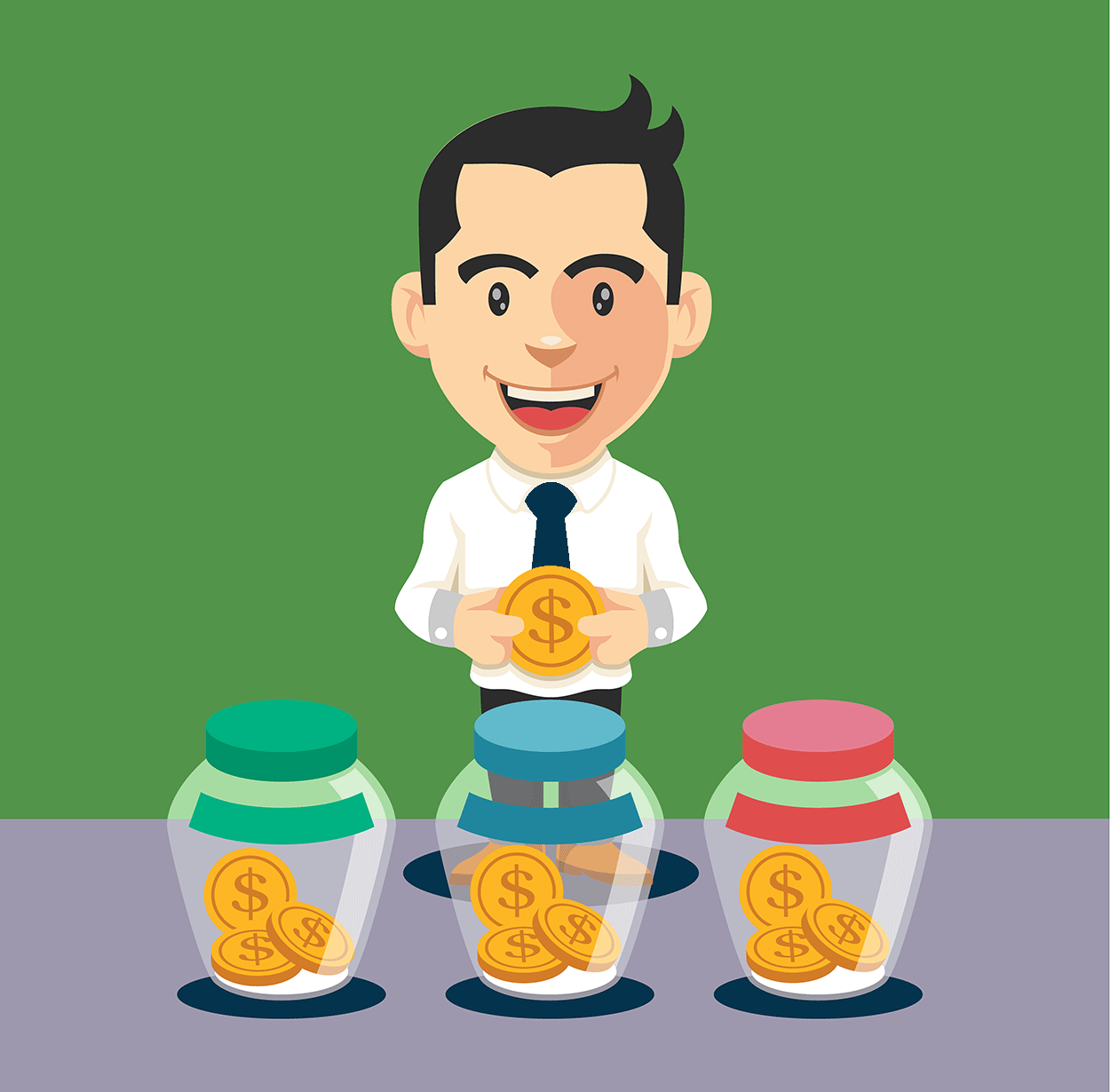CD Rate Calculator
Use this calculator to quickly figure the future value of a CD investment along with the effective APR you earned.
Investing in CDs
Saving money is a luxury that is not always available to everyone. For many people, there are good times and rougher ones, so they try their best to save wisely, and always stay financially prepared. These people come to realize it is not always the amount of money that you have to save or invest, it is often how you choose to do it that matters.
One option that many will consider, is a certificate of deposit, or CD over a savings account. While in many ways, it is similar to a savings account, there are benefits and risks to consider with a CD. This article will help you understand more about them, and how CDs can become a strategic part of your personal financial portfolio.
CD Basics

Understanding a CD is easy: they are a type of savings account, with a fixed interest rate and a set maturity date. You’d have to leave your money in the account until the maturity date and be rewarded with a nice return. The main risk is not accessing your money freely while the CD is maturing.
They are offered by banks, while credit unions offer what is called a share certificate that is basically structured and will act in the same way as a CD. Each are insured by the federal government.
While sharing some traits with a high-yield savings account, the differences are what make CDs more effective as investment products. The main differences include:
- A Fixed Term: anywhere from a few days to 20 years, most CD terms fall between 6 months and 5 years. It is not unusual to see terms of varied durations, and typically, the longer you wait for maturity, the more money accrues with better rates.
- A Higher Interest Rate: the main reason most people look to CDs over savings accounts, is to get a better rate of return over time. CDs held for five years currently have rates of 3ish%, while savings held for the same time are more like 1-2ish%. Interest rates for CDs are typically fixed.
- No Maintenance Fees: savings accounts will typically have monthly or annual fees, maybe both. They might have minimum balance requirements too – none of which you will find with most CDs.
The risk of not being able to access your money until maturity is a real consideration for anyone evaluating CDs as a savings option. While you will be able to legally and physically access the money, you will face penalties for doing so before maturity. You may lose the benefits of the CD completely for early withdrawal, so be aware of the commitment in time and choose the right savings method for your situation.
APY
A crucial point of comparison between lenders’ offers, will be the APY, or annual percentage yield offered by the CD. This is a number that reflects both the interest rate AND the frequency of compounding during a 365-day period.
The reason the APY is just as important as the interest rate, is that each time your CD compounds its interest, it will add more principal to your CD. So, one compounding daily is more attractive than one compounding monthly or more infrequently, if all are offered at the same interest rate.
In the same manner, a lower interest rate with higher compounding instances could yield you more from a CD than one that had higher interest but only compounded interest annually. Ideally, you want a CD with the highest possible interest rate and the highest possible frequency of interest compounding…or, the highest APY.
Special Types of CDs
While the basics for a CD are as outlined above, there are some special types of CDs that may be worth investigating for your own purposes. Note, that with these options, steeper deposits, minimum balances and other terms may apply to your CD, so be aware of all terms and conditions.
- Step-up CDs: offer you a periodic bump-up in the interest rate, typically at fixed calendar intervals. For instance, a 5-year CD might increase its rate a fixed percentage, annually.
- Bump-up CDs: similar to step-ups, these will offer a bump up on request, when your bank increases its APYs. Most often, you will get one or two times to bump-up the rate with one of these products.
- Jumbo CDs: essentially the same as any CD, but with a much higher deposit required (~$100K or more) to receive much higher APYs
- Liquid CDs: allow for early withdrawal without penalty. These CDs will usually carry a lower rate of return, because of the added flexibility in being able to access money before maturity.
- IRA CDs: a CD that is held in a retirement account for tax advantages.
Note that not every product will be available through every bank…but some of the terms and the flexibility these special CDs bring may lead you to shop around more diligently.
CD Strategy and Laddering
Once you understand the basics of CDs, you can look at them more strategically in how they play into your own situation. As drawn out so far, to understand the strategy you want to focus on the structure of the CD, dissecting its term, the interest rate, and the APY.
Note that while most CD terms range between six months and five years, there are actually CDs that might fall anywhere in between, and go out much further than that. The variance in terms and maturity dates allows you to think about your CDs in more strategic terms toward solving the puzzle: when can I access my money?
If you are dealing with an amount you know you will not need until the maturity date, it is easier to “set it and forget it” and maybe just roll over the balance when it matures or access it then. However, there is a common strategy called “laddering” that takes advantage of the variety in CD time frames.
Laddering
Laddering CDs is a simple, but very sound strategy for CD investment. We’ll use an example of having $10,000 to invest. Also assumed, is that you will not need to access these funds for five years. Five years is targeted, because that is the time frame when most banks offer their highest possible returns on normal CDs.
Rather than putting the entirety of your investment in a single option, you spread them out, using their maturity dates as a means to select them:
- $2500 in a CD maturing in one year.
- $2500 in a CD maturing in two years.
- $2500 in a CD maturing in three years.
- $2500 in a CD maturing in four years.
These are the “rungs” of your ladder.
The strategy comes from using the staggered maturity dates. As your first CD matures, you roll its proceeds back into a new, five-year CD. The same happens the next year, and so on, until you have a CD maturing every year. Each reinvestment will grow from the initial $2500, and you apply your increased balances to the highest possible five-year APYs.
After five years, you will have the option to collect your money or continue to reinvest it, and keep the interest rolling in at its highest.
You can also see, if you use the strategy of the ladder combined with an understanding of maximizing your APY, you can certainly make the most of your $10,000 in CDs.
The Penalties of Early Withdrawal
As mentioned, though you can remove your money from a CD early, unless it is a liquid CD you will face a penalty. Most banks will charge you a specific amount of interest, often secured by a minimum dollar amount, e.g., $25, or 6 months interest.
You’ll want to understand fully what it means if you were to draw out money from your CD early. Different banks will certainly be offering varied rates and specifics about what will occur. For example, Wells Fargo currently charges 12 months interest as a penalty for withdrawing on any CD term over 24 months, while Ally bank has a range of penalties scaling up as the years in the CD’s term also rise.
The point being, sometimes it will be to your benefit to understand the penalties, for they may be acceptable to you in a given situation. If you need the money for a medical emergency, and would face a $25 penalty to access it, you will likely pay the penalty to handle your situation.
Trying to anticipate the future, helps in CD purchases. You will want to leave a CD untouched for as long as possible to gain your returns, or you might be better off with a high-yield savings account, where your money is accessible. It is impossible to plan for every emergency, but forethought should certainly guide your decisions.
Summing Up
Most financial advisors would suggest adding CDs as a part of your savings/investment portfolio. They can earn you more money than a savings account, and are generally safe, low-risk options.
Look to use an amount of money that you are comfortable not accessing for up to five years, to maximize your returns. If you can go longer, great – look for a variety of different terms, and think about splitting your investment into rungs of a CD ladder.
When comparing offers, you will want to look not only at the interest rate, but also the number of times it is compounded, a combined sum known as APY. Aim for your highest interest rate, but a better APY can make your CD truly perform.
Compare offers at your own bank, as well as other banks and credit unions. As with any financial decision, consult the help of a qualified advisor or planner to help protect your future. When you are ready to invest in a complete CD strategy, you will find that they can be a smart and simple way to make more out of your deposits.


I very frequently get the question:
'What's going to change in the next 10 years?' And that is a very interesting question; it's a very common one. I almost never get the question: 'What's not going to change in the next 10 years?' And I submit to you that that second question is actually the more important of the two — because you can build a business strategy around the things that are stable in time. … [I]n our retail business, we know that customers want low prices, and I know that's going to be true 10 years from now. They want fast delivery; they want vast selection. It's impossible to imagine a future 10 years from now where a customer comes up and says, 'Jeff I love Amazon; I just wish the prices were a little higher,' [or] 'I love Amazon; I just wish you'd deliver a little more slowly.' Impossible. And so the effort we put into those things, spinning those things up, we know the energy we put into it today will still be paying off dividends for our customers 10 years from now. When you have something that you know is true, even over the long term, you can afford to put a lot of energy into it." - Jeff Bezos

